The Intel 6th Gen Skylake Review: Core i7-6700K and i5-6600K Tested
by Ian Cutress on August 5, 2015 8:00 AM ESTSkylake's iGPU: Intel Gen9
Both the Skylake processors here use Intel’s HD 530 graphics solution. When I first heard the name, alarm bells went off in my head with questions: why is the name different, has the architecture changed, and what does this mean fundamentally?
Not coming up with many details, we did the obvious thing – check what information comes directly out of the processor. Querying HD 530 via Intel's OpenCL driver reports a 24 EU design running at 1150 MHz. This is different than what GPU-Z indicates, which points to a 48 EU design instead, although GPU-Z is not often correct on newer graphics modules before launch day. We can confirm that this is a 24 EU design, and this most likely follows on from Intel’s 8th Generation graphics in the sense that we have a base GT2 design featuring three sub-slices of 8 EUs each.
As far as we can tell, Intel calls the HD 530 graphics part of its 9th Generation (i.e. Gen9). We have been told directly by Intel that they have changed their graphics naming scheme from a four digit (e.g. HD4600) to a three digit (HD 530) arrangement in order "to minimize confusion" (direct quote). Personally we find that it adds more confusion, because the HD 4600 naming is not directly linked to the HD 530 naming. While you could argue that 5 is more than 4, but we already have HD 5200, HD 5500, Iris 6100 and others. So which is better, HD 530 or HD 5200? At this point it will already create a miasma of uncertainty, probably exaggerated until we get a definite explanation of the stack nomenclature.
Naming aside, Generation 9 graphics comes with some interesting enhancements. The slice and un-slice now have individual power and clock domains, allowing for a more efficient use of resources depending on the load (e.g. some un-slice not needed for some compute tasks). This lets the iGPU better balance power usage between fixed-function operation and programmable shaders.
Generation 9 will support a feature called Multi Plane Overlay, which is a similar feature to AMD’s video playback path adjustments in Carrizo. The principle here is that when a 3D engine has to perform certain operations to an image (blend, resize, scale), the data has to travel from the processor into DRAM then to the GPU to be worked on, then back out to DRAM before it hits the display controller, a small but potentially inefficient operation in mobile environments. What Multi Plane Overlay does is add fixed function hardware to the display controller to perform this without ever hitting the GPU, minimizing power consumption from the GPU and taking out a good portion of DRAM data transfers. This comes at a slight hit for die area overall due to the added fixed function units.
As shown above, this feature will be supported on Win 8.1 with Skylake’s integrated graphics. That being said, not all imaging can be moved in this way, but where possible the data will take the shorter path.
To go along with the reduced memory transfer, Gen9 has support for memory color stream compression. We have seen this technology come into play for other GPUs, where by virtue of fixed function hardware and lossless algorithms this means that smaller quantities of image and texture data is transferred around the system, again saving power and reducing bandwidth constraints. The memory compression is also used with a scalar and format conversion pipe to reduce the encoding pressure on the execution units, reducing power further.
Adding into the mix, we have learned that Gen9 includes a feature called the ‘Camera Pipe’ for quick standard adjustments to images via hardware acceleration. This adjusts the programmable shaders to work in tandem for specific DX11 extensions on common image manipulation processes beyond resize/scale. The Camera Pipe is teamed with SDKs to help developers connect into optimized imaging APIs.
Media Encoding & Decoding
In the world of encode/decode, we get the following:
Whereas Broadwell implemented HEVC decoding in a "hybrid" fashion using a combination of CPU resources, GPU shaders, and existing GPU video decode blocks, Skylake gets a full, low power fixed function HEVC decoder. For desktop users this shouldn't impact things by too much - maybe improve compatibility a tad - but for mobile platforms this should significantly cut down on the amount of power consumed by HEVC decoding and increase the size and bitrate that the CPU can decode. Going hand-in-hand with HEVC decoding, HEVC encoding is now also an option with Intel's QuickSync encoder, allowing for quicker HEVC transcoding, or more likely real-time HEVC uses such as video conferencing.
Intel is also hedging their bets on HEVC by also implementing a degree of VP9 support on Skylake. VP9 is Google's HEVC alternative codec, with the company pushing it as a royalty-free option. Intel calls VP9 support on Skylake "partial" for both encoding and decoding, indicating that VP9 is likely being handled in a hybrid manner similar to how HEVC was handled on Broadwell.
Finally, JPEG encoding is new for Skylake and set to support images up to 16K*16K.
Video Support
The analog (VGA) video connector has now been completely removed from the CPU/chipset combination, meaning that any VGA/D-Sub video connection has to be provided via an active digital/analog converter chip. This has been a long time coming, and is part of a previous committment made by Intel several years ago to remove VGA by 2015. Removing analog display functionality will mean added cost for legacy support in order to drive analog displays. Arguably this doesn’t mean much for Z170 as the high end platform is typically used with a discrete graphics card that has HDMI or DisplayPort, but we will see motherboards with VGA equipped in order to satisfy some regional markets with specific requirements.
HDMI 2.0 is not supported by default, and only the following resolutions are possible on the three digital display controllers:
A DP to HDMI 2.0 converter, specifically an LS-Pcon, is required to do the adjustments, be it on the motherboard itself or as an external adapter. We suspect that there will not be many takers buying a controller to do this, given the capabilities and added benefits listed by the Alpine Ridge controller.


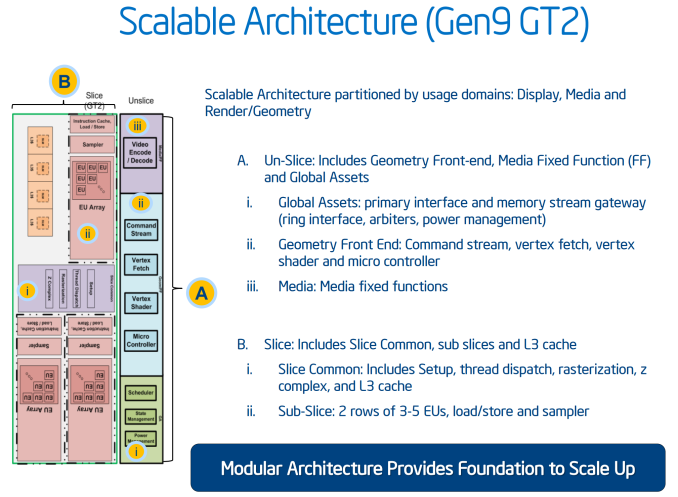
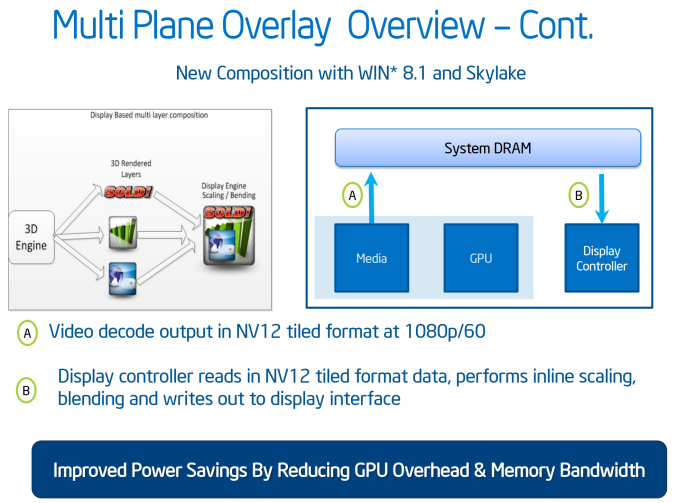
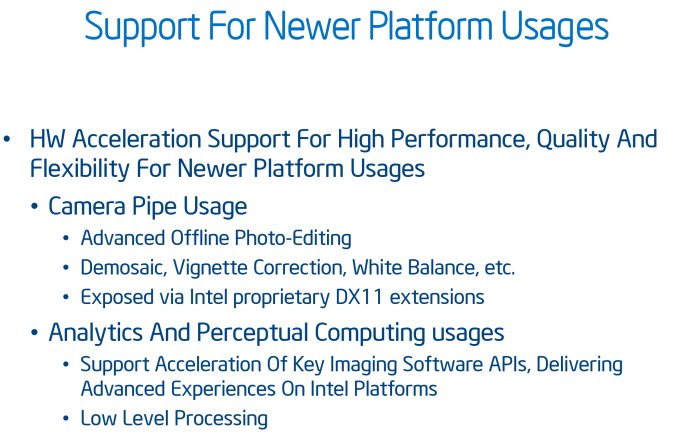

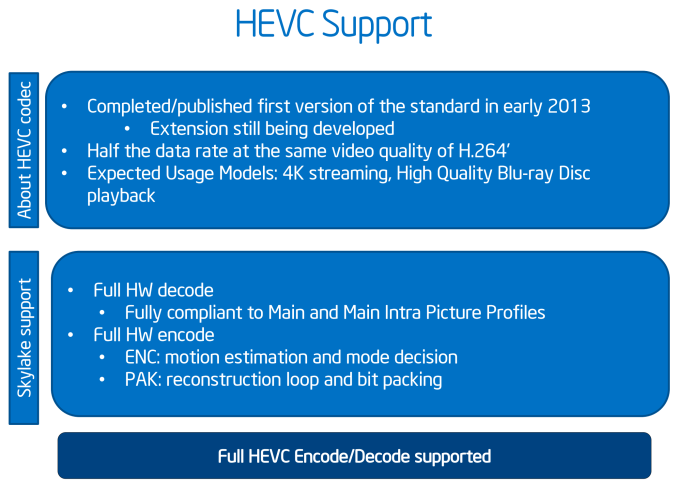
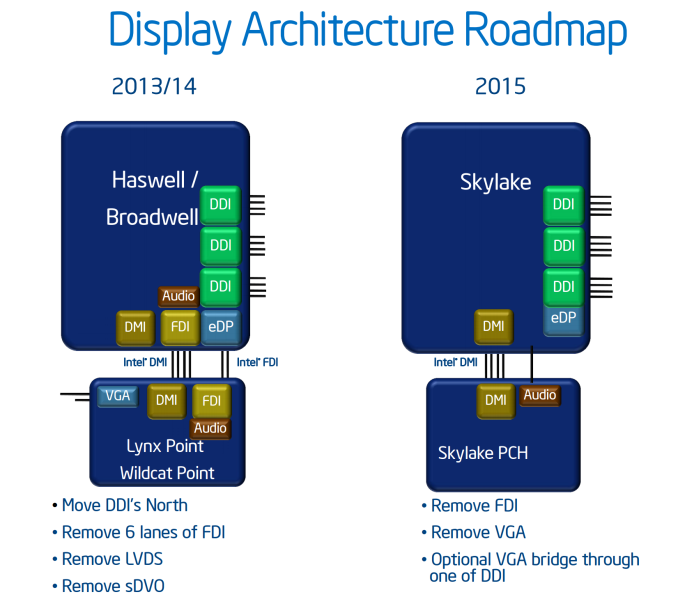









477 Comments
View All Comments
ES_Revenge - Friday, August 14, 2015 - link
Umm what the heck happened to the power consumption? In particular the i7/6700K. It's not really shown thoroughly in this review but the Broadwell CPUs are more power-efficient it seems. While the 6700K has a half GHz faster clock speed, it also has a much lesser GPU. To begin with, both the i5 and i7 Skylake parts have higher TDPs than the Broadwell desktop parts, and then the 6700K can actually draw over 100W when loaded. This is above its TDP and also significantly more than its 6600K counterpart which runs only a few hundred MHz slower. Odd.I mean I think we were all waiting for a desktop CPU that didn't have the power constraints as the Broadwell CPUs did but I don't think this is exactly what anyone was expecting. It's like these Skylake CPUs don't just take more power but they do so...for no reason at all. Sure they're faster but not hugely so; and, again, their iGPUs are significantly slower than Broadwell's. So their slight speed advantage came at the price of markedly increased power consumption over the previous gen.
That only leads me to the question--WTF? lol What happened here with the power consumption? And losing that IVR didn't seem to help anything, eh? Skylake is fast and all but TBH I was more impressed *overall* with Broadwell (and those CPUs you can't even find for sale anywhere, the last time I checked--a few weeks ago). Granted as we've seen in 2nd part of the Broadwell review it's not a stellar OCer but still, overall it seems better to me than Skylake.
It's kind of funny because when Broadwell DT launched I was thinking of how "Intel is mainly focusing on power consumption these days", meaning I thought they weren't focused enough on performance of DT CPUs. But it seems they've just thrown that out the window but the performance isn't anything *spectacular* from these CPUs, so it just seems like a step backwards. It's like with Broadwell they were showing just how much performance they could do with both CPU and iGPU with a minimum of power consumption--and the result was impressive. Here it's like they just forgot about that and said "It's Skylake...it's new and better! Everyone buy it!" Not really that impressive.
janolsen - Friday, August 14, 2015 - link
Stupid question:Can Skylake IGP easily play back 4K video. Thinking of a person just using a 4K screen for Youtube stuff, not gaming...
ES_Revenge - Saturday, August 15, 2015 - link
Yeah it can. This one of the very few improvements over Broadwell/previous HD Graphics implementations. It has a "full" HEVC decode solution built in, unlike the "hybrid" solutions they had previously. If you look on the 4th page of the review it actually goes pretty in-depth about this (not sure how you missed that?).alacard - Friday, August 14, 2015 - link
It's clear you put a ton of work into this Ian, many thanks.Flash13 - Monday, August 17, 2015 - link
So, far Intel Core i7-6700K 8M Skylake Quad-Core 4.0GHz is just vapor to the public.somatzu - Wednesday, August 19, 2015 - link
"So where'd you get your degree?""Anandtech comments section."
superjim - Friday, August 21, 2015 - link
I'm still not convinced this is a worthwhile upgrade from Sandy Bridge. If I can get 4.8 from a 2700K and maybe 4.6 from a 6700k, factor in cost difference, is it really worth it? At the end of the day, cpu/mobo/ram would be near $700 for maybe a 15% speed bump overall.watzupken - Friday, September 4, 2015 - link
From a desktop standpoint, there is very little incentive for one to upgrade. The new gen mainly targets power savings, so likely to benefit mobile users, i.e. Ultra Books and tablets.As far as Intel is trying to target those people still on Sandy and Ivy Bridge to upgrade, they fail to account for the cost of upgrade for a paltry improvement in performance. To upgrade from SB, one has to upgrade the ram, motherboard and CPU, and on top of that, need to separately purchase a heatsink since they want to cut cost.
CynicalCyanide - Saturday, August 22, 2015 - link
Question to the Authors: You've noted two DDR4 equipped mobos in the "Test Setup" section, but you've also tested DDR3 equipped Skylake. Which motherboard did you use for that?Furthermore, in a previous article it was mentioned that Z170 wouldn't be able to handle 'regular' 1.5V DDR3, but here apparently it wasn't an issue reusing old 1.5V RAM after a voltage adjustment. Was there any special method required aside from booting as per normal into the BIOS and adjusting the voltage?
TiberiuC - Saturday, August 22, 2015 - link
Everything comes down eventualy to "Intel vs AMD". What Intel did with Core2Duo was the right path to go, what AMD did was so wrong and that sometimes happen when you inovate. AMD stopped with the last FX series and went back to the drawing board and that is a wise decision. What will ZEN do? i am expecting Ivi Bridge performance maybe touching haswell here and there. If this wont happen, it is bad for them and very bad for us. Intel is starting to milk the customers acting like there is a monopoly. I did buy my 2600k for 300$ (after rebates), i have to say that the price of the 6700k is well, meh...